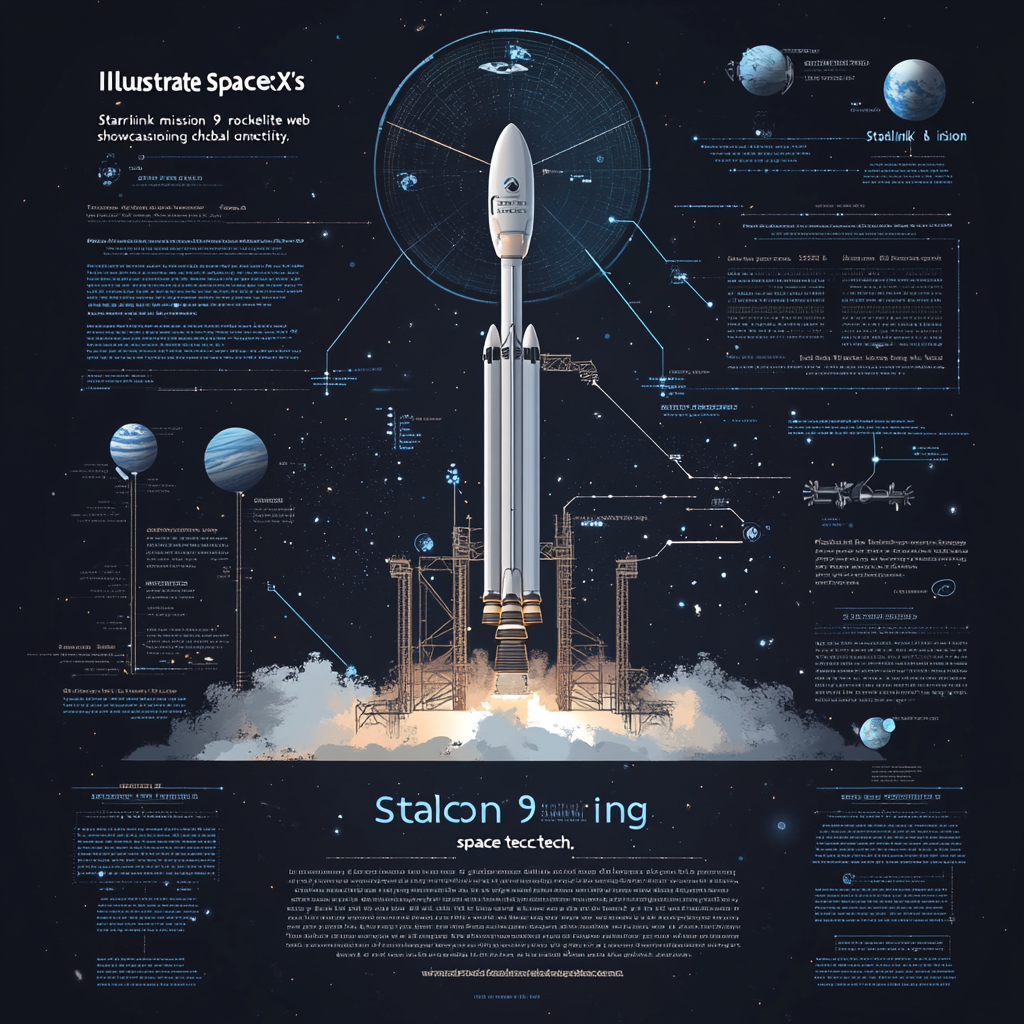
SpaceX Rocket Sends 21 Satellites to Orbit, Sea Landing Success
In the grand theater of cosmic advancement, a captivating narrative is unfolding. It's not about long-lost civilizations or the mysteries of black holes; it’s the saga of SpaceX and its audacious Starlink mission that deserves our undivided attention. Fast forward to February 18, 2025, when SpaceX unleashed another Falcon 9 rocket into the boundless abyss, escorting 23 brave Starlink satellites into the great unknown. And believe me, this is no ordinary launch—it’s a testament to human ingenuity, wrapped in layers of tech genius, underscoring our relentless pursuit of global internet connectivity. So buckle up, space enthusiasts, because this ride is going to be both enlightening and exhilarating!
Now, let’s unpack one of the most audacious feats of modern engineering: landing a rocket on a moving platform bobbing up and down in the ocean. You might think, “Heck, that’s easier said than done!” (and you’d be right!). Picture a drone ship anchored in turbulent sea near the Bahamas, steadfastly holding its ground while the Falcon 9—a beautiful beast of engineering—cascades down through the atmosphere. Waves crash, winds howl, and yet, in a thrilling moment of truth, SpaceX’s rocket makes contact. This triumph is not mere luck; it’s a carefully choreographed dance of science with a dollop of artistry. Elon Musk has often likened this to landing on an aircraft carrier, but let’s be honest, folks—landing on a moving raft in stormy waters is nothing short of sorcery.
Musk’s metaphor serves to shine a spotlight on the sheer audacity of the feat. The accuracy needed to hit a “tinier spot” that’s shifting all around requires a combination of advanced mathematics, good software, and, dare I say, a sprinkle of magic dust. If we thought nature was fickle, the ocean’s waves can be downright capricious. Yet, the Falcon 9 nailed it! It’s a triumph that beckons the curious and inspires a cascade of future innovations. We’re witnessing history being written in the skies—literally.
Ah, but there’s more to this narrative than mere rocket landings; we must delve deeper into the cornerstone of SpaceX’s philosophy: reusability! It’s a revolutionary approach that aims not just to push the limits of what rockets can do but to reshape how we think about space travel itself. You see, in the past, spacecraft were one-hit wonders, soaring into the cosmos and then—but poof!—vanished into the void after just a single launch. SpaceX decided to flip this narrative on its head, snatching back the reins of fiscal responsibility.
By recuperating and reusing rocket boosters, launch costs dwindle significantly—a crucial factor when you’re striving to blanket the Earth with a network of satellites. Yes, I’m talking about Starlink, the ambitious project that seeks to provide internet access to every nook and cranny across the globe. Imagine this: thousands of satellites forming a web of connectivity that can bridge the digital divide and bring online access to remote villages while sipping tea on a sunny day in the comfort of your home. It’s the stuff of science fiction and a sprinkle of reality!
But let’s not put on our rose-tinted glasses just yet. Starlink is a double-edged sword, and it comes with its own set of controversies. A discussion about the potential military applications of this powerful technology has simmered in the background, with concerns as palpable as an evening fog in London. How do we balance the immense benefits of uninterrupted internet for underserved communities and humanitarian aid with the responsibility of wielding such a powerful tool in a private entity’s grasp? It’s a conundrum of our times, perplexing yet essential.
Despite the hurdles, Starlink is perfectly positioned to change the way we think about satellite internet service. While rivals like OneWeb and Amazon’s Kuiper are making strides of their own, SpaceX remains at the helm of this transformative journey into the future of global connectivity. It will be a wild race to watch—who will emerge victorious, and what will the implications be for us mere mortals on this planet?
In conclusion, the latest Starlink mission epitomizes more than just another successful launch; it’s a proclamation of SpaceX’s indomitable spirit and the foundations of a new era in space exploration. As we peer into the horizon of what skyward journeys hold, one thing is crystal clear—SpaceX is not just dabbling in fantasy; it’s laying the groundwork for a revolution.
So, dear readers, if you’re keen to ride the wave of the future and stay updated with everything happening in the realm of neural networks and automation, don’t just sit there pondering—you know what to do! Subscribe to our Telegram channel: @channel_neirotoken and keep your finger on the pulse of innovation! After all, the future is now, and you don’t want to be left behind!

